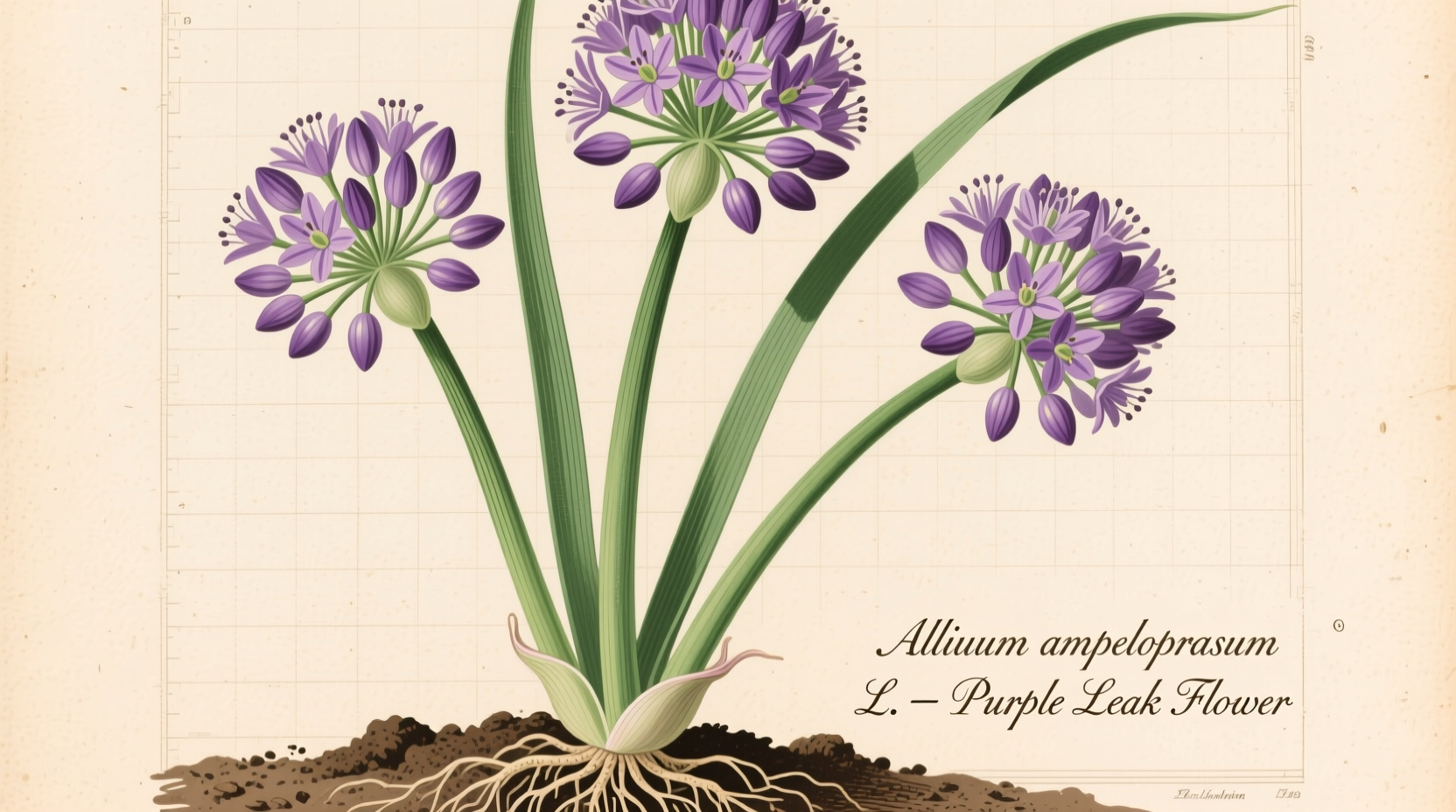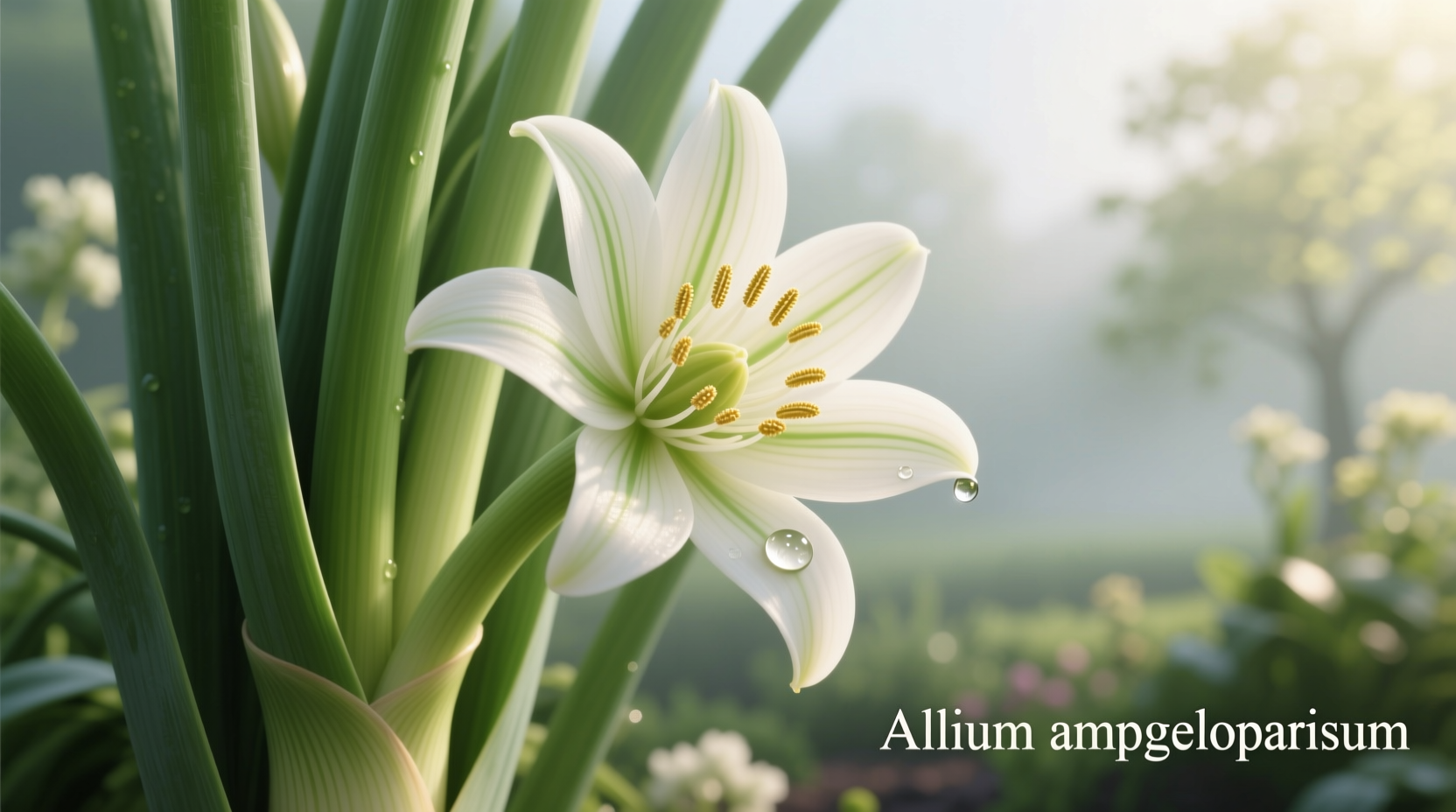Leek flowers are edible, mild-flavored blossoms that appear when leek plants bolt, typically in their second year of growth. These delicate purple flowers can be used fresh in salads, as garnishes, or infused in oils, offering a subtle onion-like flavor with floral notes. Harvest them when fully open but before they begin to fade for optimal flavor and texture.
Why Leek Flowers Deserve Your Attention
Most gardeners treat flowering leeks as a problem to prevent, but these blossoms represent a culinary opportunity many miss. When your leeks send up flower stalks, you're not just seeing the end of your bulb harvest—you're witnessing nature's gift of edible flowers with unique flavor potential. Understanding how to identify, harvest, and use these blossoms transforms what many consider a gardening setback into a seasonal delicacy.
What Exactly Are Leek Flowers?
Leek flowers emerge when the plant bolts, typically during its second growing season as it transitions from vegetative to reproductive stage. Unlike the familiar white and green stalks we harvest as vegetables, these flowers form at the top of a tall, hollow scape that can reach 3-4 feet in height.
The blossoms themselves form in spherical umbels—tight clusters of numerous small flowers—that start as tight buds before opening into delicate purple or white star-shaped blooms. Each individual flower measures about 1/4 inch across with six petals surrounding prominent yellow stamens.

Leek Flower Identification: How to Spot the Real Deal
Correct identification matters, especially since some allium varieties produce flowers that look similar but may have different culinary properties. Here's how to confirm you're looking at true leek blossoms:
| Feature | Leek Flowers | Wild Garlic Flowers | Chive Flowers |
|---|---|---|---|
| Flower Cluster Shape | Spherical, tight umbel | Loose, open umbel | Dense, pom-pom shape |
| Color | Purple to white | White | Purple |
| Stem | Hollow, thick scape | Hollow, thin scape | Solid, thin stem |
| Flavor Intensity | Mild onion-garlic | Strong garlic | Moderate onion |
This comparison helps prevent misidentification, which is crucial for safe consumption. According to the USDA Agricultural Research Service's Allium identification guide, proper botanical identification prevents confusion with potentially toxic look-alikes that occasionally grow in similar environments.
When Do Leeks Flower? Understanding the Natural Timeline
Leeks are biennial plants, meaning they complete their life cycle over two growing seasons. Here's what happens when they flower:
- First Growing Season: Leeks develop their characteristic stalks but typically won't flower unless exposed to prolonged cold followed by warm temperatures (vernalization)
- Winter Dormancy: In temperate climates, leeks overwinter in the ground, storing energy for flowering
- Second Spring: As temperatures warm, the plant sends up a flower stalk
- Early Summer: Flower buds form and begin to open (typically May-July depending on climate)
- Mid-Summer: Flowers reach full bloom and begin producing seeds
- Late Summer: Seed pods mature and dry, ready for collection
This flowering timeline, documented by Cornell University's College of Agriculture and Life Sciences, explains why most commercial leek production prevents bolting—flowering diverts energy from bulb development. However, for culinary explorers, this natural process creates an opportunity for unique ingredients.
Are Leek Flowers Safe to Eat? The Essential Safety Facts
Yes, leek flowers are completely edible and pose no known toxicity risks when properly identified. Unlike some flowering plants where only certain parts are edible, the entire leek flower structure—petals, stamens, and even the developing seed pods—are safe for consumption.
According to research published in the Journal of Agricultural and Food Chemistry, leek flowers contain similar beneficial compounds to the stalks, including organosulfur compounds and flavonoids, though in different concentrations. The flavor profile is notably milder than the bulb, with floral notes that make them particularly valuable in delicate preparations.
Harvesting Leek Flowers: Timing and Technique
For the best culinary experience, harvest leek flowers at the perfect stage:
- Optimal Timing: Pick flowers when about 50-75% have opened but before they begin to fade or develop seeds
- Best Time of Day: Early morning after dew has dried but before midday heat intensifies
- Harvesting Method: Use clean scissors to cut the entire flower head, leaving 2-3 inches of stem
- Avoid: Flowers showing signs of wilting, browning, or insect damage
Proper harvesting technique preserves both flavor and appearance. The University of California Cooperative Extension notes that rough handling can bruise the delicate petals, accelerating deterioration. For immediate use, harvest directly into a shallow container to prevent crushing.
Culinary Applications: Transforming Leek Flowers into Gourmet Delights
Leek flowers offer remarkable versatility in the kitchen. Their mild onion flavor with subtle floral notes works in both raw and cooked applications:
Raw Preparations
- Salad Garnish: Scatter whole flowers over mixed greens for visual appeal and delicate flavor
- Compound Butter: Fold chopped petals into softened butter with lemon zest for vegetable topping
- Cheese Accompaniment: Press whole flowers into the top of soft goat cheese before serving
Cooked Applications
- Infused Oils: Steep flowers in mild olive oil for 24-48 hours for delicate flavored oil
- Stock Enhancement: Add to vegetable stock during the last 10 minutes of simmering
- Omelet Garnish: Sprinkle over finished egg dishes just before serving
Preservation Techniques
- Crystallized Flowers: Dip in egg white, coat with superfine sugar, and dry for dessert decoration
- Vinegar Infusion: Steep in white wine vinegar for floral salad dressings
- Freezing: Place in ice cube trays with water for future use in soups
Professional chefs at the James Beard Foundation Cooking School note that leek flowers lose their delicate structure when exposed to high heat, so they're best added at the end of cooking or used raw. Their subtle flavor makes them ideal for dishes where you want onion notes without overwhelming pungency.
What Flowering Means for Your Leek Plants
When your leeks flower, it signals the plant's transition to its reproductive phase. This has important implications for both gardeners and culinary enthusiasts:
- Impact on Bulb Quality: Once flowering begins, energy shifts from bulb development to seed production, causing existing bulbs to become woody and less flavorful
- Seed Saving Opportunity: Allow some flowers to fully mature for seed collection—viable seeds typically develop 4-6 weeks after flowering
- Perennial Potential: In mild climates, flowering leeks may reseed themselves, creating a perennial patch
- Flavor Changes: Stalks from flowering plants develop a stronger, more pungent flavor as the plant matures
According to Oregon State University's Extension Service, while flowering reduces bulb quality for immediate consumption, it doesn't mean the entire plant becomes unusable. The upper green portions often remain tender and flavorful even as the lower bulb becomes fibrous.
Common Mistakes to Avoid with Leek Flowers
Even experienced gardeners and cooks make these common errors with leek flowers:
- Harvesting Too Late: Fully mature flowers become bitter and develop tough seed pods
- Overcooking: High heat destroys the delicate floral notes and causes petals to wilt unattractively
- Improper Storage: Refrigerating flowers in sealed containers creates moisture that accelerates spoilage
- Misidentification: Confusing leek flowers with potentially toxic allium look-alikes
For optimal results, treat leek flowers like other delicate edible blossoms—handle gently, use quickly, and apply minimal heat. The Royal Horticultural Society recommends storing them in a single layer on a paper towel-lined container in the refrigerator for no more than 2-3 days.
Seasonal Availability and Sourcing
Leek flowers appear seasonally, typically from late spring through mid-summer depending on your climate zone. In temperate regions, they're most abundant May through July, while in milder climates they may appear earlier or later.
If you don't grow your own, specialty farmers' markets often carry them during peak season. When selecting store-bought leek flowers, look for:
- Firm, crisp petals without browning
- Intact spherical shape (not flattened)
- Vibrant purple or white color (not faded)
- No signs of moisture or wilting
Freshness matters significantly with edible flowers—their flavor and texture degrade quickly after harvest. The Specialty Food Association reports that properly handled leek flowers maintain peak quality for just 3-5 days post-harvest, making immediate use ideal.











 浙公网安备
33010002000092号
浙公网安备
33010002000092号 浙B2-20120091-4
浙B2-20120091-4